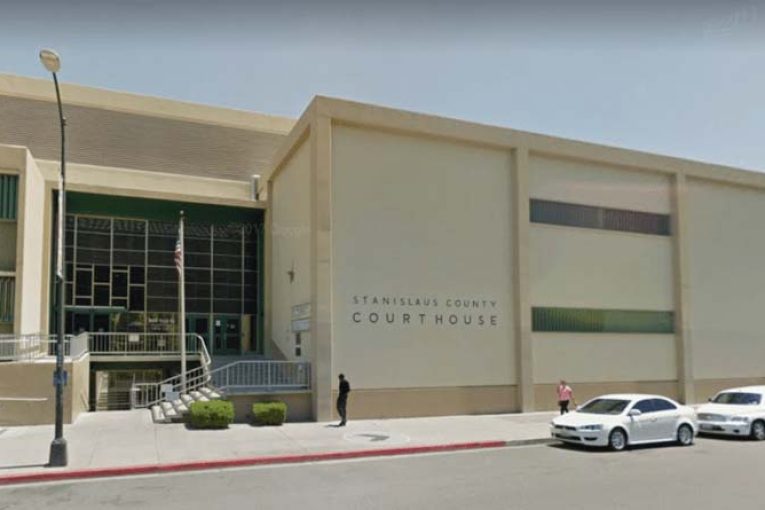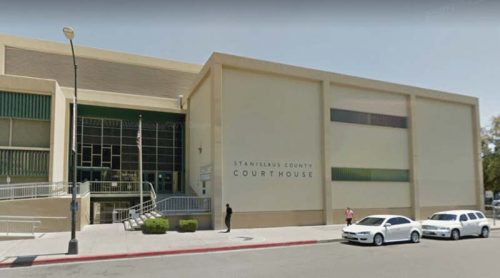

By Michael Apfel
MODESTO, CA – Stanislaus County Superior Court Judge Shawn Bessey found sufficient evidence to proceed to trial for two counts of felony armed robbery following a preliminary examination for the accused late last week.
Deputy District Attorney Patrick Hogan called an eyewitness to the witness stand, asking him about his interactions with Modesto police officers on March 4, 2022, in a Modesto hotel where the alleged incident occurred. The man was staying in a room in the hotel and planned on staying overnight.
He testified the accused, and an accomplice, had knocked on his door that night and robbed him.
“There was a knock at my room, and when I opened the door, they grabbed me, slammed me against the wall, and said ‘give me money, give me money,’” the witness said. “I saw them when they attacked me. I saw one face clearly, and the other faces I don’t remember so clearly because I was drunk.”
The witness identified the accused as the perpetrator.
“His face is familiar to me. Before this incident happened, I had seen this person in that hotel. When he entered my room, he charged me, charged at me and slammed me against the wall,” said the man, clenching his hand into a fists as he spoke.
The witness stated the accused asked for someone to get a pistol, and they proceeded to take all of the man’s cash, about $500. Other items, like the witness’s iPhone 8+, were also allegedly stolen from him, and the accused proceeded to rob the other man in the room.
Either a Chevrolet or a Toyota Corolla was seen by the man picking up the accused after the incident. The men had taken off by the time law enforcement arrived. Injuries were sustained by the alleged victim.
“Because I already had a big injury in my back when he slammed me against the wall, my wound was opened, and my clothes were bloodied. I had pain in my chest for 2-3 months,” the alleged victim said.
On cross-examination, the public defender asked the witness about his English language skills. Though the witness requested and relied on an interpretation in court, one was not used when initially speaking with law enforcement.
The witness stated that he could clearly understand his exchange with law enforcement, and he wanted an interpreter in court in case more technical language was used.
“Here, there is more technical stuff that is spoken, and I want to be exactly sure about what I am saying,” the witness said.
The prosecution’s next witness, the other alleged victim in the hotel room, testified.
“It was like a scene out of a movie,” said the witness. “I was asleep, and I heard voices and noises. I heard the sound of fighting. I woke up when [witness 1] was being attacked. I saw the person attacking him.”
The witness similarly identified the accused as one of the robbers and corroborated the first witness’s recollection of the events. He stated the accused had punched and lacerated his lip. Though he said he didn’t have much money on him and was unsure about how much he had, he said he gave them everything he had.
“I tried to show them that we didn’t have much. There were bank cards, pictures, and my driver’s license in my wallet. They took the wallet and took off,” said the complaining witness.
The public defender reminded the witness on cross-examination that he told one of the officers on the scene that he did not remember who had hit him after the altercation.
On March 15, 2022, the witness admitted an officer had called him asking if he had remembered who hit him. He told the officer that his English was not very good and that the officer should speak to the other witness
As examinations concluded, the defense submitted its final argument, pointing out the potential of a misidentification of the accused as the perpetrator.
“I would just argue that when the witness testified and was asked to identify my client, he testified that my client looked familiar,” said the defense attorney. “I believe those were his words. At this point, that would be the only argument I would make.”
The DDA argued there was sufficient identification made by the other witness, and the judge agreed, finding there was sufficient evidence to bring the case to trial.